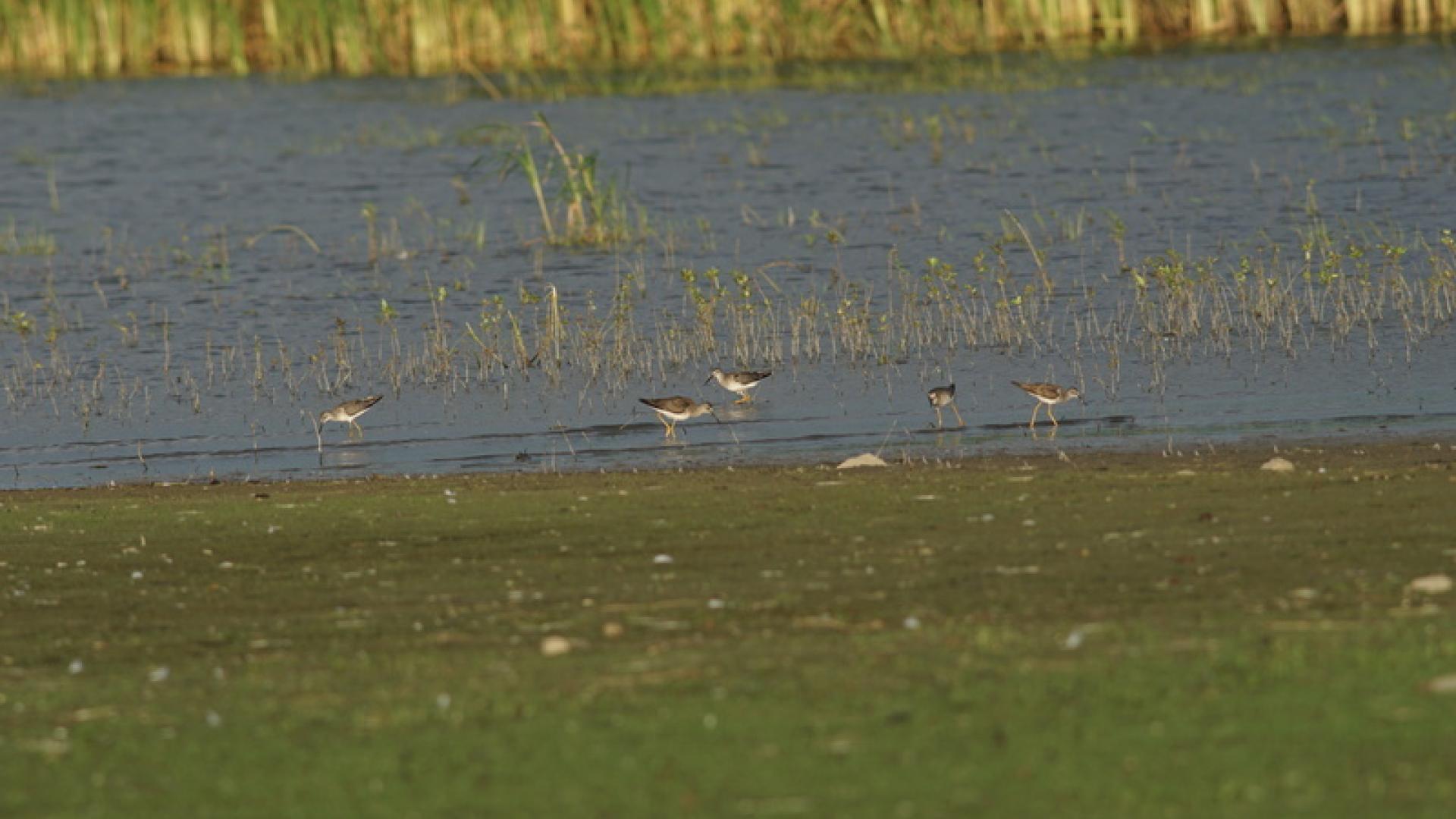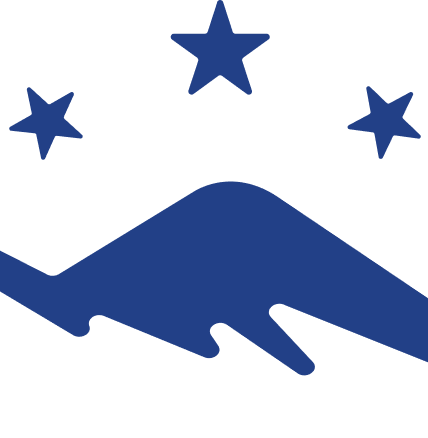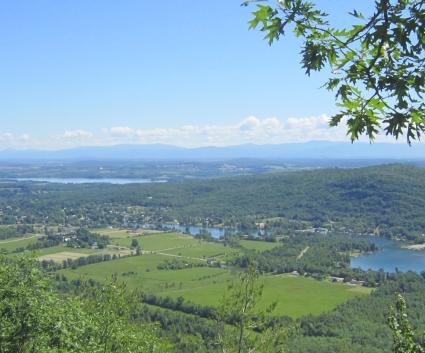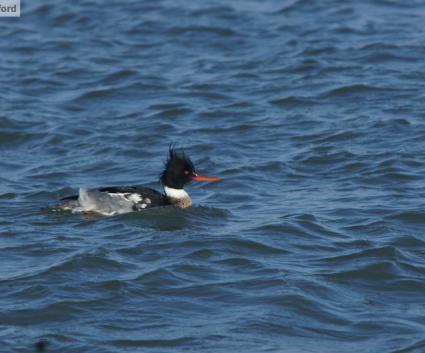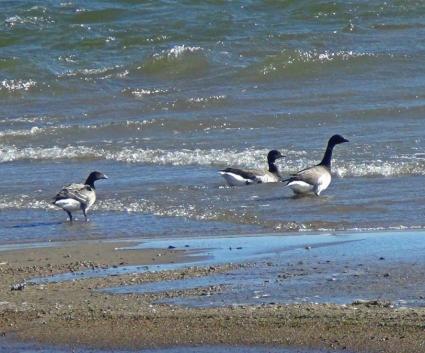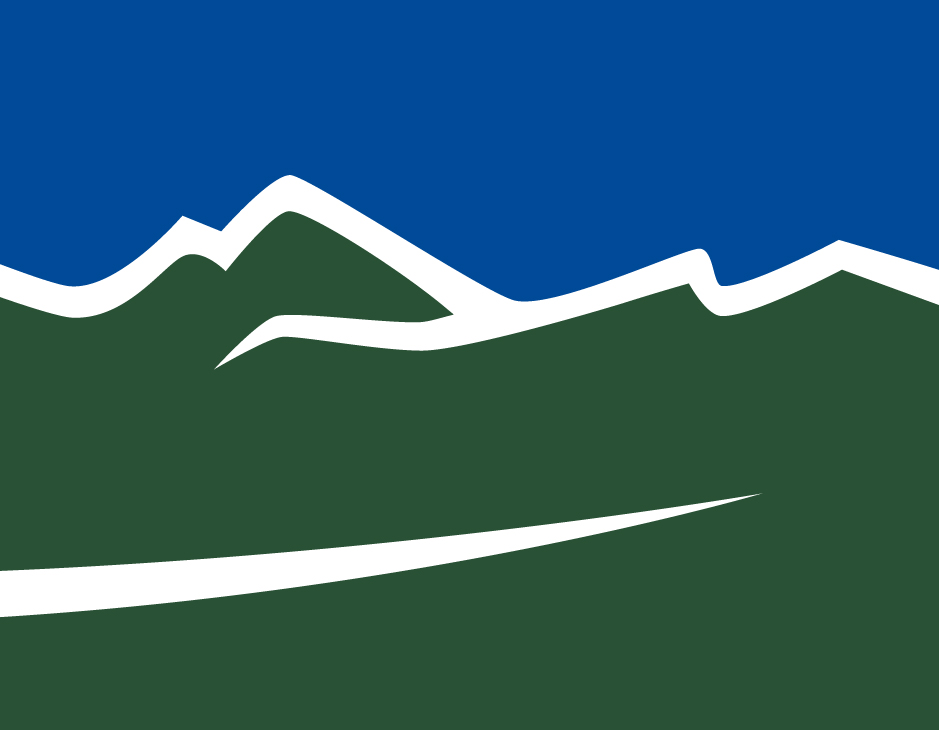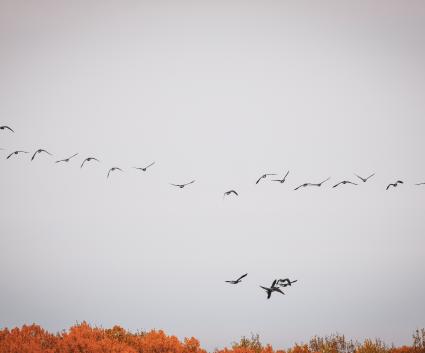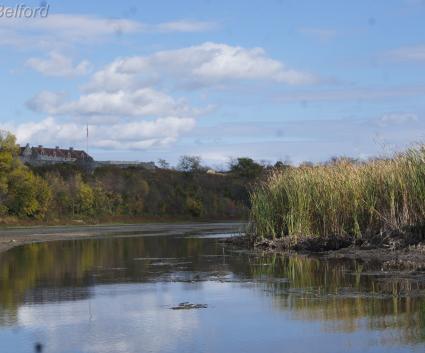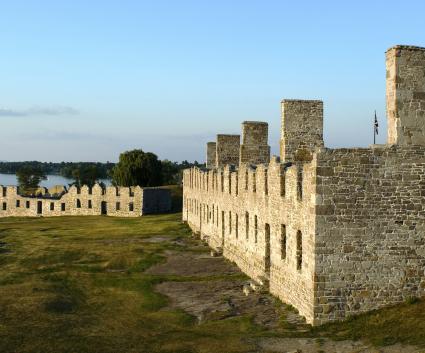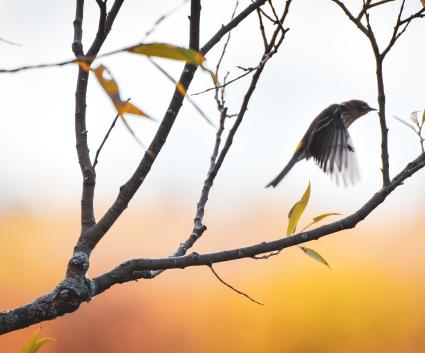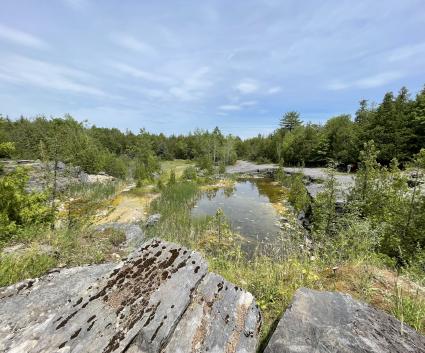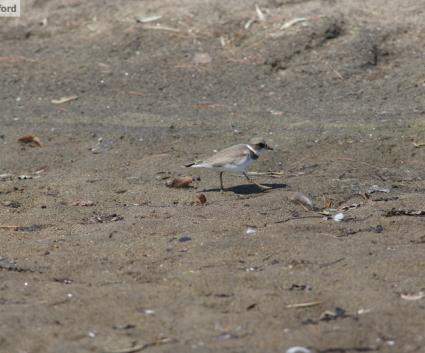Birds on the Move
I was out with a group of folks this past weekend in the Lake Champlain Region – in search of shorebirds, marsh birds, and anything else which might be on the move. After all, August is a time of migrants and of birds dispersing after they’ve nested. This sometimes includes birds which are more common to our south – as they slide north on warm, south, summertime winds. That may seem strange when so many birds are beginning to migrate south, but it makes for a month with lots of possibilities.
Shorebirds had been getting reported both in the Champlain and St. Lawrence valleys in the days and weeks preceding our trip – the list including species like Baird’s Sandpiper, Red-necked Phalarope, Short-billed Dowitcher, and Buff-breasted Sandpiper. So we were hopeful that we’d find a something of interest. Those hopes were further fueled that morning with reports of Baird’s Sandpipers at the Chazy Riverlands and a Stilt Sandpiper at Noblewood Park in Willsboro. Despite the potential at Noblewood, we stuck with our original plan of heading to Chazy.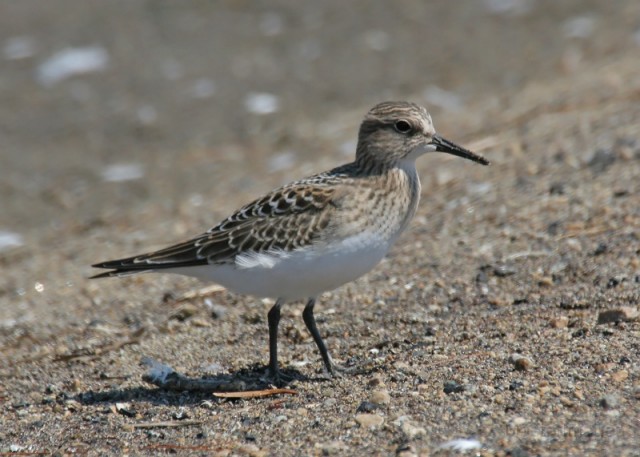
Gulls and Terns
On our way to Chazy, we worked our way up along the lakeshore, beginning at Point Au Roche, and checking out various spots along the way. We spent most of our time at Gilbert Brook Marina where a flock of gulls and terns sat on the tires which mark the ends of the marina. These included lots of Ring-billed and Herring Gulls as well as a couple Great Black-backed Gulls, but we were more interested in looking through the Bonaparte’s Gulls in case there was a Little Gull or something else hidden with them. We also looked through a contingent of Common Terns while a few Caspian Terns fished over the lake and a couple Spotted Sandpipers probed along the water’s edge. And while we didn’t turn up any odd species of gulls in the mix, it was worth a look – only two days later a Little Gull was found at Noblewood.
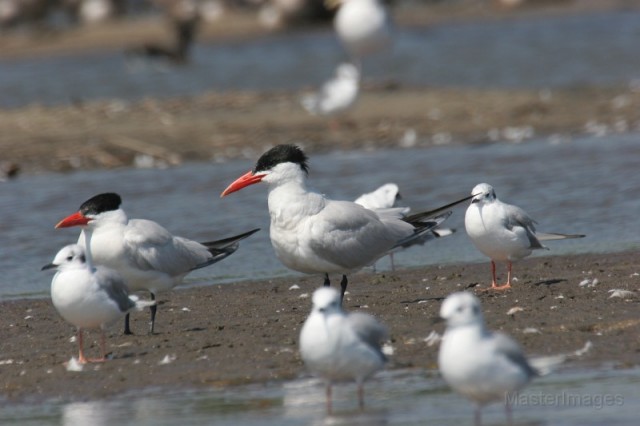
Shorebirds – and More
We continued on to Chazy where I have permission to access (through private land) the most attractive pool to shorebirds. Folks without permission who are interested in the site should paddle south from the boat launch at the Great Chazy River – a means of access which puts them right along the reeds and cattails. Two of my birding friends were already there – watching three Baird’s Sandpipers, a Least Sandpiper, and a Semipalmated Plover. We stood watching with them as the birds moved back and forth over the mudflat and Savannah Sparrows popped in and out of the reeds and grasses, feeding. We soon discovered that there were two more Least Sandpipers hiding in the reeds with the sparrows, bringing our tally to three.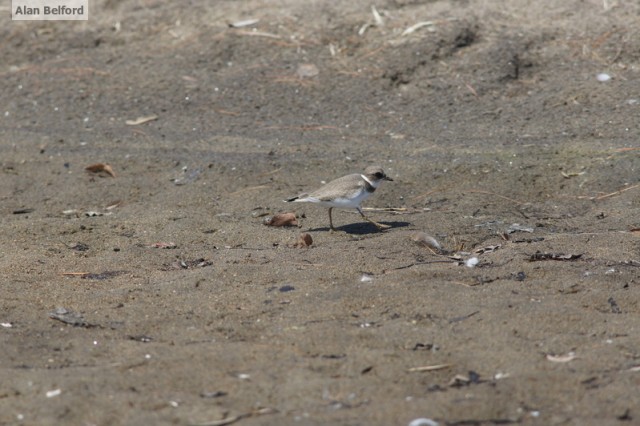
Other songbirds in the area included the usual large flock of Bobolinks which passed overhead one way and then the other, separating in a couple flocks and then the flocks occasionally coming back together again. Several of the Bobolinks finally perched up on the reeds in the open where we could scope them in their yellow, late summer colors. We also watched swallows overhead – mostly Barn, but there were also a few Tree and several Bank Swallows mixed in with them.
Nighthawks…Yellowlegs…Least Bittern…Ibises!
Even with all this, things began to get more interesting once my two friends we met there left. Their departure was almost immediately followed by two Common Nighthawks hunting overhead at an early hour. Then 16 Lesser Yellowlegs showed up – in two distinct flocks. Then it was two Wood Ducks. We were just thinking about moving on down the road when a Least Bittern flew from one patch of cattails, across the mouth of the pool, and into another. We tried to find the bittern by scoping the place where it was hidden, but we couldn’t find it – spotting a Marsh Wren instead. It seemed like every time we thought about leaving, something else showed up.
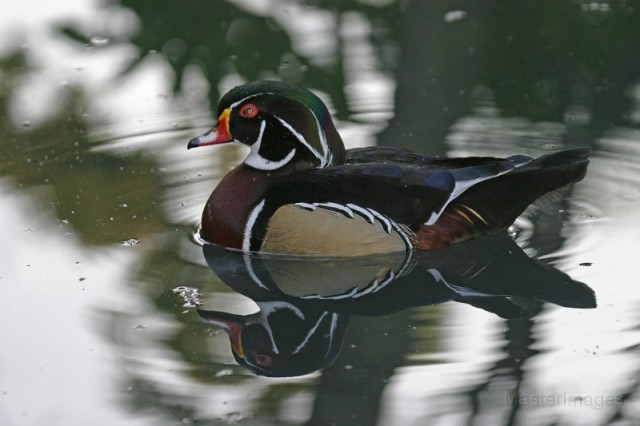
As we stood scoping, and wondering how long to stay, two dark shapes came low over the marsh from the north. “Ibises!” I exclaimed, almost shocked by these southern birds, and to our delight the birds landed in the pool and fed for a while directly in front of us! Glossy Ibis are rare up here, but get found from time to time in the region and there had been a couple reported from Vermont only a few days earlier – perhaps these were the same birds.
Since this was big news I called a few local birders to let them know – including my two friends who had left us not long before. They hustled back and the ibises stayed just long enough for them to see the birds before they continued south. Perhaps the ibises are still feeding in the lake valley somewhere. One of my friends also noted that two Semipalmated Sandpipers had also arrived at the pool – slipping in while we were distracted by the excitement of the ibises.
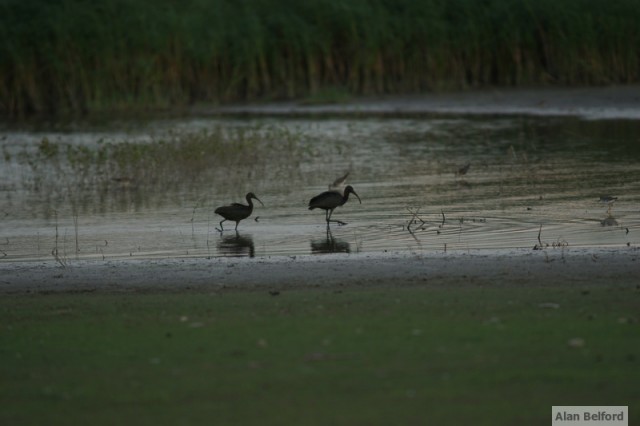
We finally decided to leave – reluctantly – as the sun kissed the horizon. We had stayed longer than we had planned but no one was complaining. It goes to show that remaining in one place can be a great way to find birds – just by patiently waiting.
Late summer and early fall offer great birding in the Lake Champlain Region. But like those ibises, many of the birds won’t stay for long. Plan your birding and outdoor recreation adventure today – and check out our lodging and dining pages!

